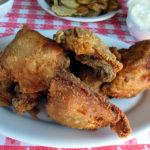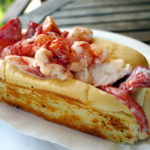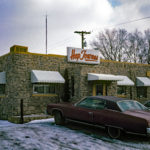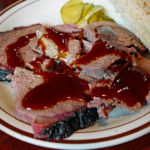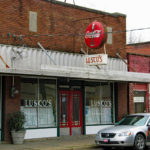The Fried Clam Belt
I am a semi-retired plumber, but I've dug clams all my life," says Tom Marr, the cook at Farnham's diner in Essex, Massachusetts. "The ones you want to deep-fry are just about so long," Mr. Man declares, holding his thumb and middle finger a scant two inches apart. "Any bigger than that, a clam is good only for frying in a pan, or for people in Connecticut. If a clam is too small, like the ones that come from Canada, it won't have much taste. Eating little clams is no better than eating peanuts."
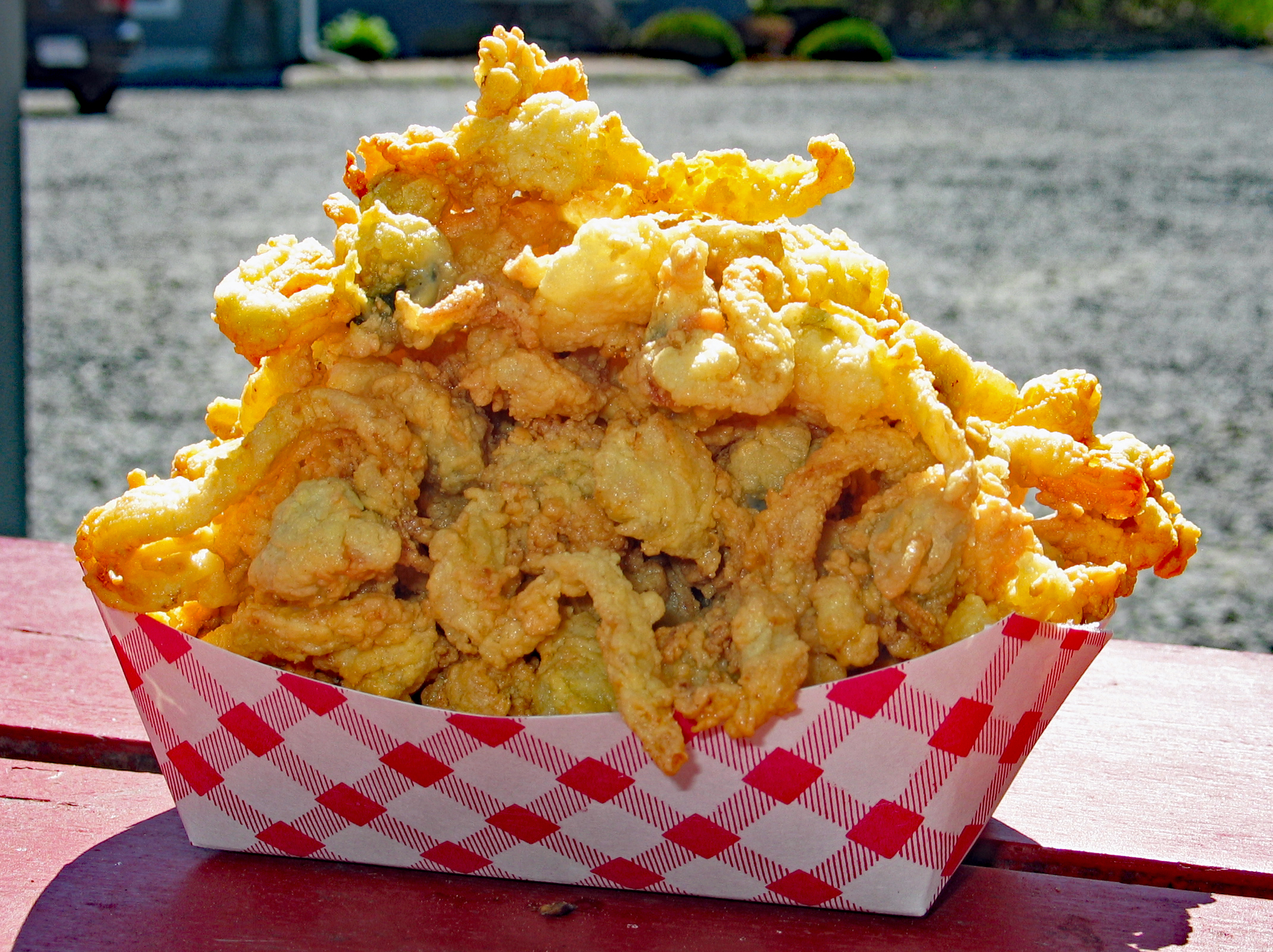
By Jane And Michael Stern
Originally Published 1995 Gourmet Magazine
I am a semi-retired plumber, but I’ve dug clams all my life,” says Tom Marr, the cook at Farnham’s diner in Essex, Massachusetts. “The ones you want to deep-fry are just about so long,” Mr. Man declares, holding his thumb and middle finger a scant two inches apart. “Any bigger than that, a clam is good only for frying in a pan, or for people in Connecticut. If a clam is too small, like the ones that come from Canada, it won’t have much taste. Eating little clams is no better than eating peanuts.”
Strong convictions about clams are common among cooks, customers, and staff at restaurants all along the Atlantic shore just north of Boston. This is America’s fried clam belt, and if you are really serious about your fried clams you will want to know their size, exactly which beds they come from, what they’re fried in, and how often the kitchen sifts its meal. The best clams for deep-frying—steamers large enough to pack a salty savor and yet not so big they wind up as fodder for crude tongued Connecticuters—are hand-raked at low tide from beds in the Essex River, where smooth sand and pure water combine to yield the sweetest, most tender clams in the East. And along the winding marsh-lined roads that run among the fishing and resort villages of Cape Ann you find a handful of ultra casual restaurants that serve the most delicious ones on earth. After you have eaten them in Essex and Ipswich, you are spoiled for life. As long as your tastebuds retain the memory of these bulging, crisp fried beauties of Massachusetts, any other fried clams will always seem a little flat.
Behold the great fried clam: It is a crusty, pale gold nugget, big enough to be one greedy mouthful. It is a heavy piece of food, the way steamer clams are, and, although it first appears to be a twisted, free-form blob, close scrutiny reveals two distinct areas: the long, chewy neck and the tender belly. The belly yields the distinctive marine smack of a freshly opened mollusk. On the very finest fried clam platters, the bellies vary subtly in size, making each and every piece a unique eating experience. Some are, in fact, scarcely bigger than a Virginia peanut, making a package with more crust than clam, in which the chewy neck provides the prime sensation and the silky morsel of oceanic meat plays second fiddle. On others, the belly is large enough that it reminds you of a steamer or a clam on the half shell, with a nectarous clamitude that has the quality of being cooked and yet maintains its fresh, briny wallop.
A great fried clam feels incredibly fragile, as if it is about to fall apart, when you lift it from the plate or from its pint container. It has a lot of bounce in your fingers, as though the tenuous veil of crisp-cooked cornmeal that envelops it may at any moment disintegrate. It feels like a piece of food on the verge of transformation. That’s the magic of a great fried clam. When you savor it, the crust fairly melts in your mouth. It has a wicked crunch, but, like the crust of a blue-ribbon pie, the brittleness turns lush on the tongue. It is both rich and bracing, one of those wondrous foods that seem to provoke appetite long after hunger has been appeased. Most fried clam platters appear frighteningly enormous when you pick them up at the order window of the restaurant—even pints are customarily served with surplus spilling out of the box—but it is amazingly easy to plow through order after order here in clam country.
We considered it our duty as a service to mankind to find the best fried clams on earth. So we ate them up and down the coast, with onion rings, french fries, clam fritters, clam chowder, and coleslaw, and zeroed in on a quartet of clamatoria along the North Shore that we believe set the standard of excellence.
Let’s start with WOODMAN’S OF ESSEX, if for no other reason than the Woodman family’s claim of having invented the fried clam. The oft’ told tale is that late in June, 1916, Lawrence “Chubby” Woodman, who sold clams-in-the-shell and freshly cooked potato chips from a small stand on the Essex Causeway, was approached by a friend named Mr. Tarr, who wanted something different. Tan suggested that Chubby throw some clams into the iron fry kettle with his potato chips. A week later, on Sunday, July 3, when Mr. Tan returned, Woodman presented him with a plate of fried clams and some cider on the side. In fact, so the story goes, Chubby Woodman sold seven gallons of fried clams to eager passers-by that first Sunday. It was the dawn of a new age of fried food.
City people who escaped to the North Shore soon made Woodman’s crisp clams part of their summer weekend ritual. The fry kettles were moved inside, and the little stand became known as Woodman’s Sea Grill. By the 1920s there was an indoor dining room. A shore dinner of chowder, fried clams, fried potatoes, and coffee cost 65 cents—or 75 cents if you wanted lobster, too.
Today’s Woodman’s is a raucous enterprise, a helter-skelter complex including a function hall in back behind a Dunkin’ Donuts shop, a tent for clambakes, an upstairs raw bar, and a sprawling enclosed dining room where wooden booths and tables are almost always packed with happy eaters. There are signs taped and tacked everywhere. Some announce menu items: “Lobster Roll Special, Clam Strips.” A sign near the take-out window says, “Attention: All ColeSlaw, Tartar Sauce, and Butter Money Goes to the L. Dexter Woodman Scholarship Fund. Thank You.” Another, near the order window, alerts customers: “Our Fried Clams Are Running Big Today.”
The style of service (or perhaps we should say non-service) at Woodman’s is what’s known along the Massachusetts shore as “eat in the rough.” Although many genteel, full-service restaurants in the area have good fried clams on their menu (in particular, we recommend The Village, in Essex), eating in the rough makes fried clams taste better, the way hot dogs are more delicious in a ballpark and chili is best when it’s served at an all night truck stop. When you eat in the rough, you present yourself at a window where the menu is posted, place your order, pay for it, and get a number. As your number is called, you fetch your food at the pick-up window, where it is arrayed on paper plates and in paper cartons, and carry your tray to a table. When you are finished eating, you dump the refuse in a big garbage can somewhere on the sidelines of the dining room.
Woodman’s clams are beauties: light gold, not particularly brittle, but with a suave surface crunch and a velvety interior. Larry Woodman explained that the elegant texture of the crust is due to fresh meal. After the raw clams are dipped in evaporated milk, they are dredged in cornmeal. If the meal isn’t regularly sifted, it cakes up and sticks to the clam.
Just up the road toward Gloucester is J.T. FARN-HAM’S, another essential stop on the fried clam trail. A relative newcomer, having celebrated its fiftieth anniversary in 1994, it is a cute little roadside diner with flower boxes at the open windows and a pleasant marshland breeze wafting over the short counter and high-backed wooden booths. It’s the kind of place favored by locals more than tourists; from our booth, we enjoyed a delightful view of the bed of a customer’s parked pickup truck and his well behaved bird dog, waiting patiently for his master to return with a small handful of clams as a treat.
The Farnham family ran the business until May of last year, when Janice and Joe Farnham sold it to Terry and Joseph Cellucci, both locals who have no intention of changing a thing. “Of course we cook our clams in lard,” Terry Cellucci said. “We use a combination of lard and vegetable oil. The lard is essential because something about it makes the clams extra good.”
Cook Tom Man’s wife, Gladys, shucks the clams, and they are dipped in a top secret liquid before their immersion in cornmeal. The result is a clam that is positively ethereal; tender, light-crusted, and with a faint nut-rich flavor. A plateful is a mountain, and the onion rings are great—big and meaty with ragged, crunchy crusts that are deliriously satisfying. To accompany this feast, Farnham’s offers all the usual tonics (note: in this part of New England, soft drinks are known as “tonics”) plus sarsaparilla and Moxie.
In Ipswich, on the way to Little Neck, there is a clam connoisseur’s landmark, in business since 1935. It is called THE CLAM Box, and it is shaped like a clam box: a trapezoidal restaurant fifteen by fifteen feet at the bottom, a little wider at the top, and thirty feet high.
Clam Box clams are sheathed in a frail crust that yearns to blend with the clam inside. They have a lively salt sea character. According to Marina (Chickie) Aggelakis, the proprietor, and Dale Harrington, the chef, the secret of their clams’ snapping fresh flavor is clean oil. (A sign at the order window apologizes for occasional delays that occur when the oil is changed.) Like Farnham’s, they use a blend of lard and vegetable oil, and they always strive to get local clams. “Three years ago we had a couple of days when we couldn’t get good little clams for frying, not even from Maine or Maryland,” Mr. Harrington said. “We served no clams those days because the only ones available were frozen. Can you imagine frying frozen clams?”
Of all the fried clam sources in the area, WHITE CAP is our favorite. From Route 133 it resembles a little strip mall—a low, flat building set back from the road. “Eat-in-the-comfortable-ruff,” a White Cap take-out menu boasts. The clams are golden blistered squiggles, rich and satisfying. They seem nearly weightless compared to most clams, and their taste is melt-away light, too. There are various sizes on the plate, and they are nearly impossible to stop eating until they are gone.
White Cap has been a Gianakakis family business since 1959. Charlie Gianakakis, whose father started it and whose children will take over when he retires next year, is a real clam man. “Ours come from Ipswich, Essex, and Newberry,” he said. “The best ones are from Newberry now, but in a year or two I think Ipswich will be tops again. We have our own diggers who come in with bushels after every tide, and we shuck them in our shucking room. The clams you eat for lunch probably came in that morning.” He takes us to the shucking room, where two bushels, fresh in from Newberry, are ready to be shucked. “Look here!” Charlie says, rummaging through the top bushel until he finds what he wants. He pulls up a sleek mollusk just over two inches long. Its shell is smooth, gray, and fragile. “Here is a nice clam!” he exults, caressing it gently with his thumb. “Here is a clam with promise!”
J.T. Farnham’s
White Cap (permanently closed)
141 High Street
Ipswich, Massachusetts
Discuss
What do you think of The Fried Clam Belt?
Related Articles
Stroud’s
By Jane and Michael Stern Originally Published 1995 Gourmet Magazine Chicken...
The Lobster Roll Honor Roll
Maine is the only state in America that features a picture of cooked food on its license...
Meat-And-Three
A few years back, country singer Ray Stevens invited a New York friend to join him at one of...
Top 12 favorite Ice Cream Scoops
WITH THE EXCEPTION of the hot dog bun, there has never been an edible invention as...
Top 5 BBQ Restaurants | Western Kentucky
Get yourself to Western Kentucky for great BBQ I see the food shows on TV where...
Best restaurants in Greenwood, MS | Hot Licks Delta Style
Ever since we first ate margarine-sauced pompano at Lusco’s, in Greenwood,...

